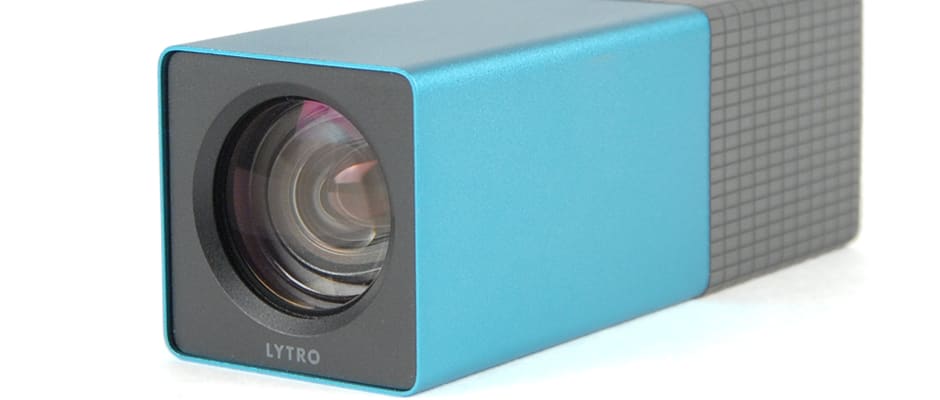Pros
Cons
Video Review
Introduction
We jumped at the chance to spend an hour with a pre-production version of the Light Field Camera at a press event during the 2012 Consumer Electronics Show. The concept is undeniably excellent, but we have a few reservations about the place of this first-gen product in a crowded marketplace. Read on for our first impressions.
Design & Appearance
{{section_header}}{{section.name}}{{/section_header}}
The Lytro looks like a giant lipstick case. It's bigger in person than it looks in the press pictures, but the tour photos above should offer better perspective.
Tour
{{section_header}}{{section.name}}{{/section_header}}




Menu
{{section_header}}{{section.name}}{{/section_header}}
Lytro asked us to hold off on our judgment of the menu system since it's very much in beta. We will say that they're off to a decent start--the options are streamlined, and the touchscreen interface is responsive and mostly intuitive.
Ease of Use
{{section_header}}{{section.name}}{{/section_header}}
Part of Lytro's "manifesto," if you want to call it that, is to make a camera for the everyman that takes all the challenge out of photography. We only saw a pre-production model, so some details could change, but the Light Field Camera is dead simple. There's a single shutter button, a zoom slider, and a touchscreen LCD--very straightforward.
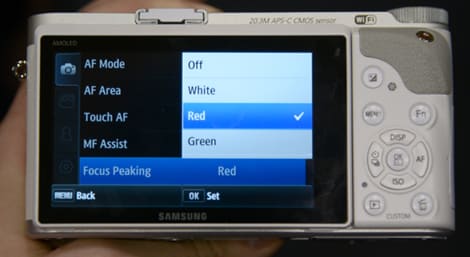

Size & Handling
{{section_header}}{{section.name}}{{/section_header}}
The body is bigger in person than it looks in the press pictures. Handling is a bit weird--shooting with a heavy stick just feels bizarre. It isn't particularly difficult or uncomfortable, but composing shots with anything besides a typical camera takes some getting used to.
The zoom mechanism is pretty unique and worth a comment; rather than a standard zoom tilter or twist barrel, zoom is controlled by dragging a finger left or right across a textured surface above the LCD, behind the shutter button.
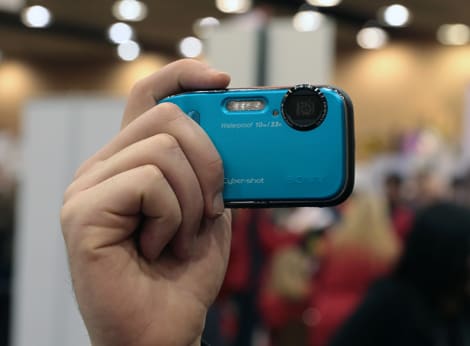
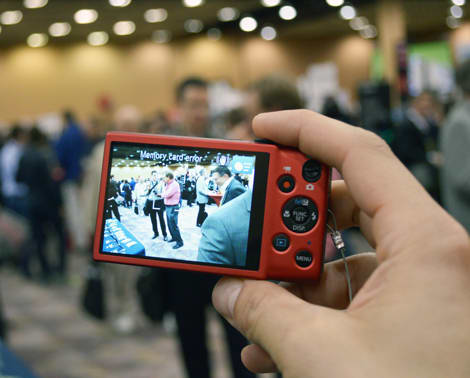
Modes Overview
{{section_header}}{{section.name}}{{/section_header}}
Two modes were available on our pre-production model: auto, and an "advanced light field" mode. The modes are subject to change before the final version of the Light Field Camera hits the market, but Lytro made it sound like these same two modes will make it into the production model.

Auto Mode
{{section_header}}{{section.name}}{{/section_header}}
Auto mode is the default setting, and it's literally as simple as pointing-and-shooting. Auto exposure can be adjusted by tapping on an area of the screen.
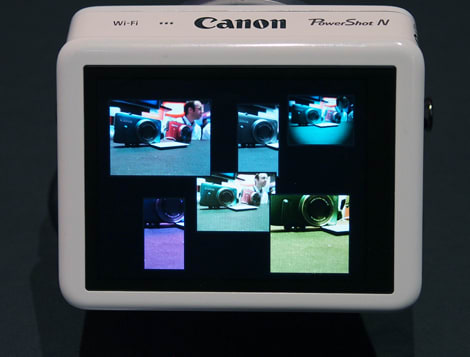
Movie Mode
{{section_header}}{{section.name}}{{/section_header}}
There will not be a movie mode on the production version of the Light Field Camera. Lytro founder Ren Ng said in a recent interview that theoretically light field imaging could be integrated into video, but it won't be available in this first-gen product.
Drive/Burst Mode
{{section_header}}{{section.name}}{{/section_header}}
There were no burst or continuous drive modes available on the pre-production model we saw, and Lytro made no indication that there would be on the production model.
Custom Image Presets
{{section_header}}{{section.name}}{{/section_header}}
No custom presets were included in the beta interface, and there are no plans for any in the final product.
Playback Mode
{{section_header}}{{section.name}}{{/section_header}}
Again, we only tested a pre-production version of Lytro's firmware, but it's a good start. It's a touch-based interface, and the light field engine refocusing software lets the user preview the shots with different focus points within the camera.
Picture Quality & Size Options
{{section_header}}{{section.name}}{{/section_header}}
The Light Field Camera produces light field picture files (.lfp). It'll ship with proprietary software to process the files. Team Lytro told us that the raw image files are about 16 megabytes out of the camera, but usually get compressed down to about 200 kilobytes and 1 megapixel of resolution after processing. We haven't seen this software, so we aren't sure how the software works or how user friendly it will be. It's a big question mark for us.
Other Modes
{{section_header}}{{section.name}}{{/section_header}}
Advanced light field mode is the only option aside from auto. It took a few minutes for us to wrap out heads around this one, but we'll do our best to explain (and feel free to comment if you can think of a better way to explain this, or if we got any details a bit wrong).
In auto mode, the camera measures the light field all the way out to infinity, so there's a sharp contrast between obvious foreground and background objects, but it's hard to separate objects that are slightly closer or further from each other.
In advanced light field mode, the user can select the center of the light field. It'll be easier to create contrast between objects that are closely grouped, though the light field engine loses the ability to sharpen the background. It's tough to explain, but fairly easy to pick up in practice.
Focus
{{section_header}}{{section.name}}{{/section_header}}
Focus is controlled after the shot is taken, so the camera doesn't need to pre-focus. The Lytro captures the entire light field--"all of the light traveling in every direction in every point in space" as Lytro's press material explains it--rather than just a flat image. It produces a "living picture," in which users can click different parts of the photo and actively adjust the focal point.
Exposure & Metering
{{section_header}}{{section.name}}{{/section_header}}
Exposure and metering can be adjusted by tapping a part of the frame for reference, but there's no fine control over EV stops or metering photometry settings.
ISO
{{section_header}}{{section.name}}{{/section_header}}
ISO is not user adjustable, and we were not provided with specs about the ISO range--honestly, we're not even sure if ISO sensitivity is applicable with this type of camera.
White Balance
{{section_header}}{{section.name}}{{/section_header}}
No white balance control is available, aside from the aforementioned tap-exposure control.
Image Stabilization
{{section_header}}{{section.name}}{{/section_header}}
The Light Field Camera has no image stabilization.
Picture Effects
{{section_header}}{{section.name}}{{/section_header}}
No picture effects or scene modes are available.
Lens & Sensor
{{section_header}}{{section.name}}{{/section_header}}
The lens is an 8x zoomer with a fixed f/2.0 aperture. It's all internal, so it doesn't protrude from the body.

LCD
{{section_header}}{{section.name}}{{/section_header}}
The LCD is a comparatively tiny, 1.46-inch, 1:1 touch panel--about the same as the screen on an iPod Nano. It looked pretty grainy on the pre-production unit we saw, and we're unsure if that will change before the finalized version.

Flash
{{section_header}}{{section.name}}{{/section_header}}
The Lytro has no flash.

Jacks, Ports & Plugs
{{section_header}}{{section.name}}{{/section_header}}
A single USB port sits on the bottom of the body under a rubber flap, next to the power button. It's used for charging and transferring photos.
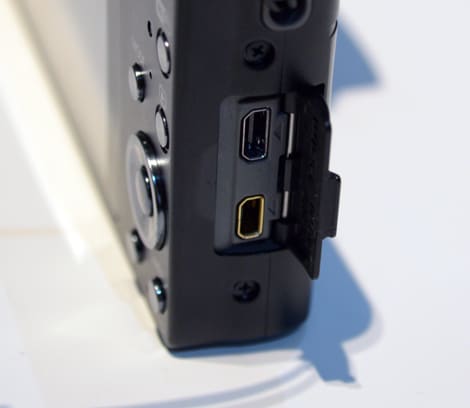
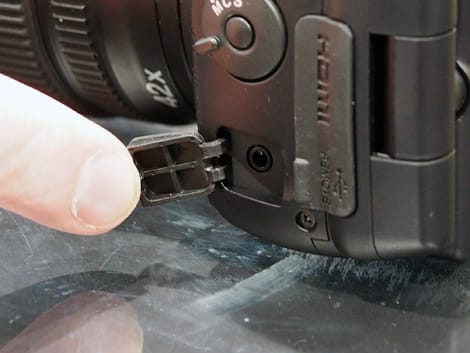
Battery
{{section_header}}{{section.name}}{{/section_header}}
The camera runs off of a built-in lithium-ion battery. Lytro hasn't provided specs on how long it's rated to last per charge.

Memory
{{section_header}}{{section.name}}{{/section_header}}
Like the battery, the memory is all internal. 8GB and 16GB models will be available.

Conclusion
Light field photography is the first really, truly groundbreaking new technology in photography since the advent of digital. Lytro's founder pioneered the technology a few years ago, and wasted no time applying it to a consumer product. We got to spend about an hour shooting around with a pre-production model of the Lytro Light Field Camera during CES 2012. Team Lytro gathered a few dozen journalists and industry affiliates in the lobby of the Wynn hotel for a test run.
The camera itself has a nice build and a cool design, with a few brushed-metal color finishes. Though we didn't get to play around with our photos in Lytro's software (or even see the final compressed images yet), the light field engine is built into the camera, so we had a bit of first-hand experience re-focusing our own pictures. We were told that the interface was still in beta and there would be some tweaks before the release version, but what they showed us was a good start. It's touch-based, which is normally a non starter for cameras, but it's useful for the tap-to-focus feature during playback.
We'll soft-pedal most of our criticisms, since we were continually reminded that we were shooting with a pre-production build and some components could be replaced before the official launch. But no high-res LCD or foolproof UI can correct the camera's weird handling. It just felt bizarre to shoot pictures with a stick.
Looking at it from a broader perspective, the concept behind the Light Field Camera is undeniably great, but our initial impression is that it doesn't have the goods to be the blockbuster, mass-market camera that Lytro wants it to be. The light field technology either needs to be integrated into a more complete camera system to justify the price, or rolled out in a much cheaper package to attract a mass audience.
This original Lytro Light Field Camera is a one trick pony, a point-and-shoot camera with an extra feature. $400 is a fair price for new tech, but this isn't some magical, all-powerful gizmo that bypasses the principles of photography. Photos can never be out of focus, which is groundbreaking, but the light field technology doesn't solve other problems like motion blur. The post-shot adjustable focus is the single feature sets it apart from a $130 point-and-shoot; where's the incentive for your aunt or grandma to spend three times the cash on some odd-looking box from an unknown brand?
We'll give it a more thorough run-through in a few months when it's released, but we'll need to decide if it's worth running through our image quality tests. Lytro's director of photography, Eric Cheng, told us straight up that the Light Field Camera will get "trounced" if we evaluate it like a regular camera, shooting resolution charts and noise tests, and comparing it to a standard camera misses the point, anyway. We're not so sure about that last part, but a groundbreaking product like this one deserves a proper run-through.
{{product.vanity}}
Sample Photos
{{section_header}}{{section.name}}{{/section_header}}
Specs
{{manufacturer_specs_table}}
Meet the tester
Liam manages features and news coverage for Reviewed.com. Formerly the editor of the DigitalAdvisor network, he's covered cameras, TVs, personal electronics, and (recently) appliances. He's a native Bostonian and has played in metal bands you've never heard of.
Checking our work.
Our team is here to help you buy the best stuff and love what you own. Our writers, editors, and experts obsess over the products we cover to make sure you're confident and satisfied. Have a different opinion about something we recommend? Email us and we'll compare notes.
Shoot us an email
